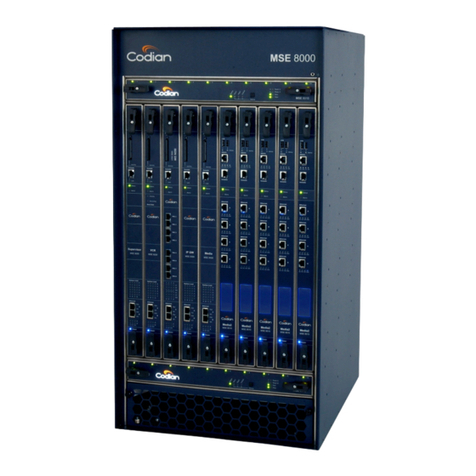7
Cisco MDS 9000 Family Port Analyzer Adapter Installation and Configuration Note
OL-9077-01
Hardware Description
Power Generation
The PAA requires 12-VDC external power. An AC converter is provided and connects to the power input
at the rear of the unit.
Modes of Operation
The PAA has five modes of operation, four truncation modes and one no-truncate mode. These modes
are used to configure the size of the frames that will be copied from the Fibre Channel interface. The two
factors that are used to determine the setting are:
•The difference in speed of the Ethernet from the Fibre Channel interface.
•The amount of payload required for troubleshooting purposes.
This balance can be achieved by using one of the four truncate modes to increase or decrease the frame
rate at the expense of reducing or increasing the payload. By truncating the Fibre Channel payload, the
adapter can transmit more frames per second on the Ethernet interface.
There are four external DIP switches on the rear of the adapter, numbered 1 through 4, from left to right.
These switches configure the PAA to operate at either 1-Gbps or 2-Gbps Fibre Channel speed in one of
the five modes of operation.
The modes of operation are as follows:
•No truncate mode (NTM)
•Ethernet truncate mode (ETM)
•Shallow truncate mode (STM)
•Deep truncate mode (DTM)
•Management mode (MNM)
A speed mismatch between the Fibre Channel and the Ethernet side of the adapter could affect the frame
throughput on the Ethernet side. For example, if the Fibre Channel speed is set at 2 Gbps, and the
Ethernet speed is set at 1 Gbps, and all packets on the Fibre Channel side are 2164 bytes in size, you
must configure the adapter to DTM or STM mode for the Ethernet side to receive all frames. If the
adapter were in ETM (or NTM) mode, it would drop packets on the Ethernet side, and the Ethereal
Network Analyzer might not see all the frames. Table 2 shows how the DIP switches should be
configured for each Fibre Channel port speed and operating mode.
Table 2 DIP Switch Settings and Modes of Operation
Switch 1 Switch 2 Switch 3 Switch 4
Fibre Channel
Mode
Operating
Mode
ON ON ON ON 1 Gbps MNM
OFF OFF ON ON 1 Gbps DTM
OFF ON OFF ON 1 Gbps STM
ON OFF OFF ON 1 Gbps ETM
OFF OFF OFF ON 1 Gbps NTM
OFF OFF ON OFF 2 Gbps DTM
OFF ON OFF OFF 2 Gbps STM




























